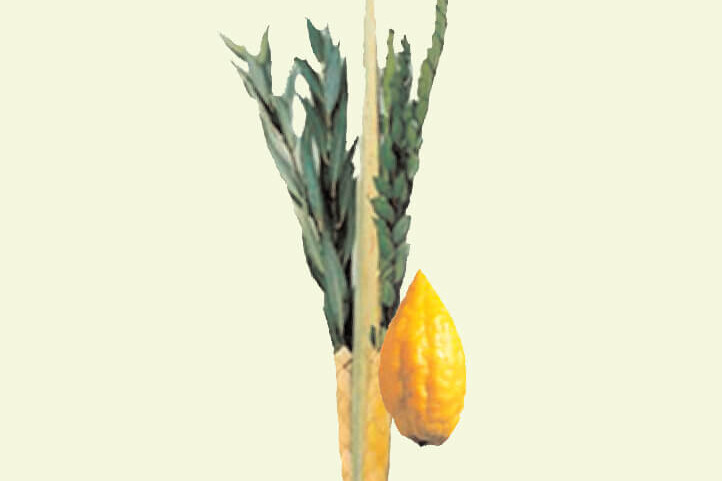Walk into a traditional synagogue in the middle of morning services during the week of Sukkot and you might have to take precaution not to be trampled upon by the circle of attendees walking around the bimah (central table where the Torah is read) holding their lulavim.
The Hoshanot service has been part of the celebration of Sukkot since the days of the Holy Temple, when, according to the Mishna: “It was customary to make one procession around the altar on each day of Sukkot, and seven on the seventh day” (Sukkot 4:5).
In the Talmud, the later sages debate whether the original Hoshanot service was performed with the lulav and etrog or with willow branches alone. Today the entire lulav (four species) is held throughout the service. Each day a different piyut, religious poem, is recited as the congregants circle the bimah on which the Torah is held. (On Shabbat-Sukkot, the piyut is recited, but there are no lulavim and the bimah is not circled.)
The name of the service, Hoshana, is derived from the opening word that is repeated throughout the first prayer: Hoshana. This word is actually a contraction of two separate words and means “Please save!” The congregants open the ceremony by beseeching God to save His people “For Your sake, Our God!”; “For Your sake, our Creator!”; “For Your sake, our Redeemer!”; and “For Your sake, our Attender!” Each cry is preceded and followed by “Hoshana” (Please Save!).
The Treat was last posted on October 3, 2012.
Copyright © 2013 NJOP. All rights reserved.
If you like what you’ve read here, signup to get notifications about new treats.
Related Posts
The Sukkot Hoshanot Service
Walk into a traditional synagogue in the middle of morning services during the week of…
0 Comments2 Minutes
The Sukkot Hoshanot Service
Walk into a traditional synagogue in the middle of morning services during the week of…
0 Comments2 Minutes
The Sukkot Hoshanot Service
Walk into a traditional synagogue in the middle of morning services during the week of…
0 Comments2 Minutes
 Print This Page
Print This Page